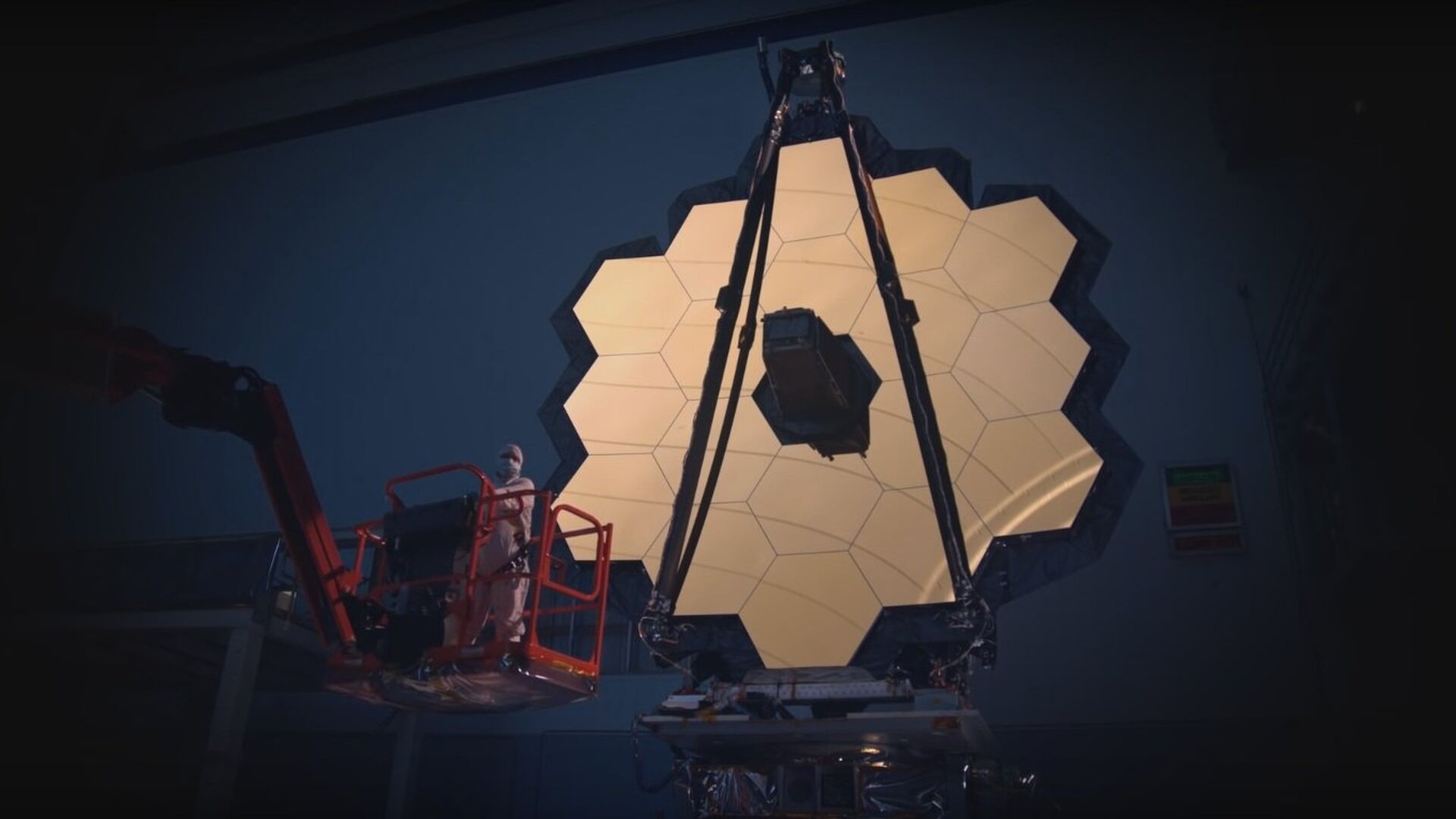Webb Space Telescope’s Optical Alignment Deemed 'Perfect' by NASA After Capturing Stunning Test Pics
03:34 GMT 11.05.2022 (Updated: 13:35 GMT 06.08.2022)
Subscribe
The James Webb Space Telescope (Webb) was launched on Christmas Day - nearly five months ago. The $10 billion project is a large infrared telescope that was created with the intent of becoming the leading observatory for astronomers across the globe for the next decade.
The Webb telescope will have the ability to observe some of the first galaxies ever created, changing the future of astronomy, and the most powerful telescope ever launched into space has yet to disappoint.
On April 18, test images were released revealing razor-sharp images captured by Webb of a star field in the Large Magellanic Cloud. This star field was left murky in images by NASA’s now-retired Spitzer Space Telescope. However, a new image released on Monday is now offering a detailed view of the star field, capturing an image that includes defined clouds.
Computer, enhance! Compare the same target — seen by Spitzer & in Webb’s calibration images. Spitzer, NASA's first infrared Great Observatory, led the way for Webb’s larger primary mirror & improved detectors to see the infrared sky with even more clarity: https://t.co/dIqEpp8hVi pic.twitter.com/g941Ug2rJ8
— NASA Webb Telescope (@NASAWebb) May 9, 2022
"I'm delighted to report that the telescope alignment has been completed with performance even better than we had anticipated,” said Michael McElwain in a Monday release. McElwain is a Webb observatory project scientist at NASA’s Goddard Space Flight Center in Greenbelt, Maryland.
"We basically reached a perfect telescope alignment. There's no adjustment to the telescope optics that would make material improvements to our science performance," added McElwain. “These are the sharpest infrared images ever taken by a space telescope.”
With 18 hexagonal mirror segments, Webb will surpass its predecessor, the beloved Hubble Space Telescope which was launched in 1990 with the capability of capturing areas of space that would otherwise be too distant or too old for Hubble to capture.
According to Pontoppidan, the objects that Webb will be assigned to photograph will be chosen based on how Webb can best showcase its capabilities. These objects will include the early universe, the lifespan of galaxies, the lifecycle of stars and even “other worlds,” including the first generations of stars and galaxies that were formed following the big bang 13.8 billion years ago.
✅ Check please!
— NASA Webb Telescope (@NASAWebb) May 9, 2022
Before we can #UnfoldTheUniverse & start science, our team must test, calibrate, verify and sign off on each mode of operation for Webb’s 4 instruments. There are 17 instrument modes in total! Follow along on our “Where Is Webb?” tracker: https://t.co/1OTI2bYnfR pic.twitter.com/mXp9NQ6CeY
"[NASA’s] objective is to demonstrate... to the world and to the public that Webb is fully operational and that it produces excellent results," said Klaus Pontoppidan, Webb project scientist at the Space Telescope Science Institute in Baltimore. "It's also an opportunity to celebrate the beginning of many years of Webb science."
Though Webb’s official images won’t make their debut until later this summer, most likely in mid-July, scientists are keeping Webb’s first official object a secret.

